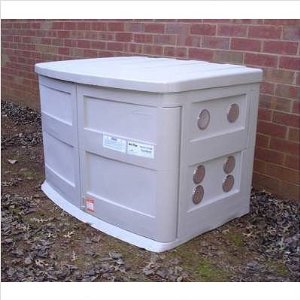GenTran GS7500 Generator Shelter for Portable Generators up to 7500-Watt
Generator enclosures have mainly been used in the outdoors to protect portable power generators from wetness, damp, and dirt, while shielding against noise pollution as much as possible. Today, generator enclosures are now more widely used, even in homes and small offices to shield a generator from all sorts of damage, as well as create a quieter generator by minimizing its roar and vibrations.
Whether you opt for a sheet steel-type generator enclosure, a portable enclosure you can take anywhere, or a permanent generator shed, you won’t go wrong with providing your genset with a protective home to make it last longer as well as to significantly reduce generator noise.
Store bought generators are known for being strong and lightweight. In fact, you can fit one into the back of your truck or trailer. You can buy a generator enclosure from brick-and-mortar retailers, or order one from the Internet. Amazon has a number of different generator enclosures for portable power generators, like the durable and waterproof GenTran GS7500 Generator Shelter for portable generators that can lower your genset’s engine noise by as much as 10 decibels, providing you with a more silent generator you’ll appreciate.
On the other hand, you can build your own generator enclosure at a very low cost and with simple raw materials like wood and galvanized iron. If you are the do-it-yourself type who’d enjoy working on a project like this, you’ll be able to design your own enclosure based on your specifications, whether you prefer a simple design or an elaborate one you can pass off as part of your home or office’s decorating scheme.
When building your own enclosure, you’ll need to make allowances for ventilation, whether via exhaust pipes or a lift-up top, and enough space for your power generator’s electric cords. Since generators housed in enclosures normally build up exhaust gasses during prolonged use, it will also be a good idea to situate your setup out in the open to prevent accumulation of emissions that could lead to injurious or even fatal accidents.
And just because your now silent genset is housed in an enclosure doesn’t mean you should forget all about looking in on it or doing away with checking for battery acid leakage and other maintenance checks altogether. Leakages can lead to dangerous emissions of noxious carbon monoxide and propane, so regular examinations and “airing” will do your “enclosed” generator setup a lot of good.
See also: